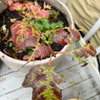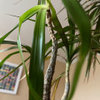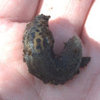To BT or not to BT...sigh
a_shau
10 years ago
Related Stories

LANDSCAPE DESIGNGreat Design Plant: Sun-Loving Bougainvillea Showers Yards With Color
Bring unbeatable vibrancy to a garden or wall with this unfussy and trainable shrub packed with colorful bracts
Full Story
BEDROOMSDream Spaces: Bedrooms With Amazing Views
Soaring over the city or nestled amidst nature, these sleeping spaces focus on the most divinely designed feature of all
Full Story
KITCHEN STORAGEKitchen Storage Hacks to Make Use of Every Space
Cupboards full? Try these kitchen ideas for working more valuable storage into your cooking space
Full Story
WINTER GARDENINGPruning Secrets for Exquisite Roses
Encourage gorgeous blooms year after year with this time-tested advice on how to prune your rosebush in winter for health and shape
Full Story
GARDENING FOR BUTTERFLIESButterfly Gardening: Delight the Eyes With Living Sculptures
Surprise and thrill with a garden that attracts magical winged creatures, bringing color, movement and life
Full Story
COLORFUL HOMESThe Best of My Houzz: 10 Living Rooms With Wall Colors to Love
Jet black, Meyer lemon yellow, mossy green — these spaces make a statement with bold color
Full Story
LANDSCAPE DESIGNWild Gardens Bring Excitement and Beauty to Landscapes
Forget what’s expected and ‘fashionable.’ Bold gardens teeming with site-appropriate plants make for a richer experience
Full Story
HOME TECHDoes Your Home Need an Operating System?
New technologies hope to unify the lawless frontier of home-automation products. Would they work for you?
Full Story
HOUZZ TOURSHouzz Tour: A Revolutionary Renovation in Connecticut
A 200-year-old farmhouse retains elements of its past, like reclaimed wood, yet feels decidedly modern. Yoga, anyone?
Full Story
ORGANIZINGChecklists for a Well-Stocked Home
Thank-you notes, first-aid kit, clear glass vases ... It’s easy to go with the flow when you’ve got the items you need at hand
Full StoryMore Discussions










rhizo_1 (North AL) zone 7
Kimmsr
Related Professionals
Londonderry Landscape Architects & Landscape Designers · Middletown Landscape Contractors · Edmond Landscape Contractors · Gaithersburg Landscape Contractors · Galveston Landscape Contractors · Holland Landscape Contractors · Lady Lake Landscape Contractors · Pahrump Landscape Contractors · Painesville Landscape Contractors · River Ridge Landscape Contractors · Wallingford Landscape Contractors · Eastlake Landscape Contractors · Raytown Landscape Contractors · Okolona Stone, Pavers & Concrete · Tysons Corner Stone, Pavers & Concreteken_adrian Adrian MI cold Z5
a_shauOriginal Author
a_shauOriginal Author
Kimmsr